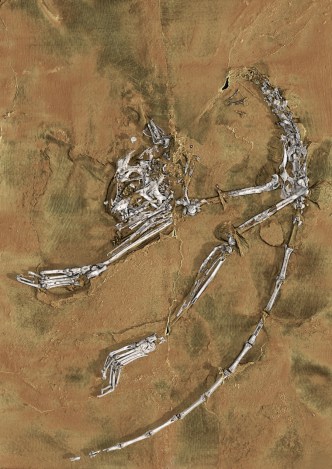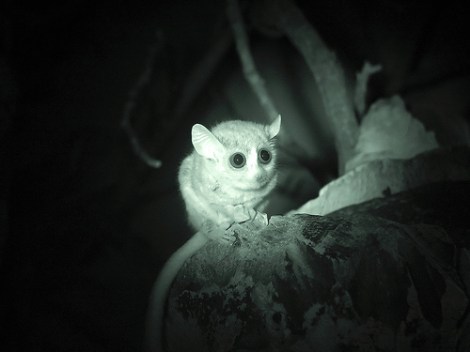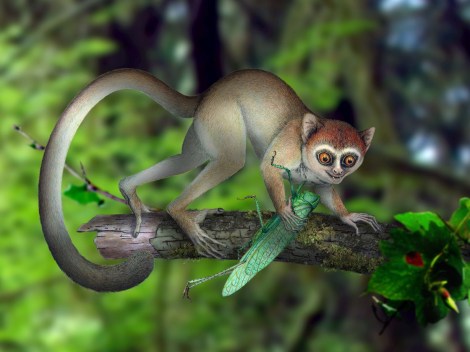Years ago, in eastern China, a farmer dug up what turned out to be one of the oldest — if not the oldest — primate skeletons ever discovered. This guy, now named Archicebus achilles, lived 55 million years ago, weighed just about an ounce, and is just about the cutest little ancient primate skeleton you’ll ever see.
It was, Nature reports, about the size of a pygmy mouse lemur, which is really quite tiny:
It lived in trees, and an artist imagined it looked something like this:
OK, this actual image is kind of creepy, but if you squint and use your imagination you can see how adorable it must have been. (And so little! Look at the size of that grasshopper!)
Those sharp teeth were meant to shred insects, perhaps. Nature:
Such prey would have been abundant, because A. achilles evolved during an era when global temperatures were exceptionally high and jungles stretched as far north as the Arctic. “It was a great time to be a primate,” says Beard.
What’s particularly interesting, scientifically, about this little creature is that it illuminates the split between human ancestors and the ancestors of other primates. A. achilles is “the earliest-discovered ancestor of small tree-dwelling primates called tarsiers,” according to Nature. But it’s also a mishmash of features — it has heels and feet like anthropoids, which are human ancestors. (The “achilles” in its name winks at that characteristic.) It’s too bad A. achilles was around about 55 million years before the internet, though: We’re pretty sure he would have been a star.






